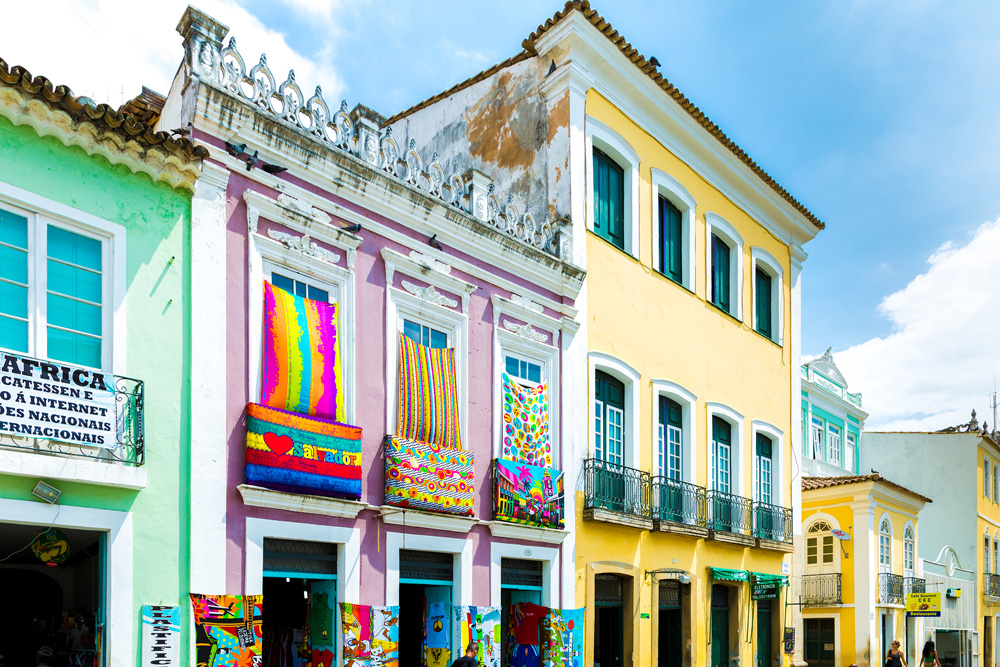
Pelourinho, the famous historic centre of Salvador
If you’re lucky enough to be planning a holiday in Brazil, you’ll soon see how easy it is to fall in love with all that is Brazilian. Beautiful white sand beaches dotted with coconut trees and the most lush and diverse rainforest in the planet still riddled with isolated Amazonian tribes are just part of the adventure to the South American jewel. You will also find rich and diverse ethnicities, a vibrant lifestyle filled with music and dance and of course the love of soccer seen in almost every street corner.
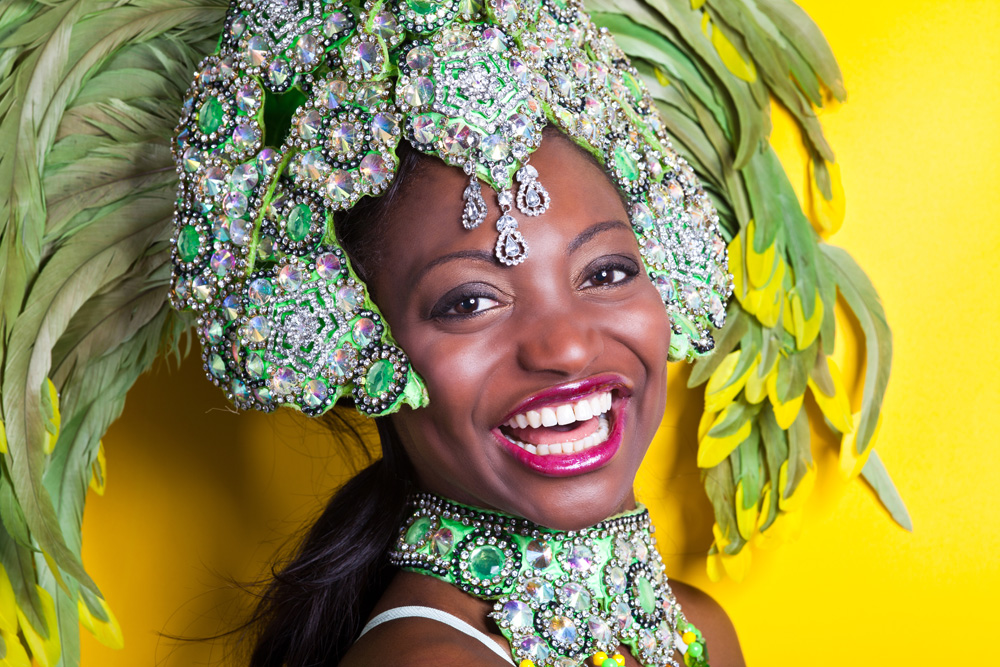
A Brazilian woman wearing a samba costume
With such a large country, comprised of 26 states, it’s difficult to choose where to head to beyond the usual highlights. One definitive choice is Bahia, which is, without a doubt, one of the most beautiful states in the country. Isn’t it enough this is where samba and capoeira manifested from?
Far from the Amazon, Bahia is the soul of Brazil. Pronounced Ba-yee-ya, the name comes from the captaincies of the Portuguese Empire that occupied Brazil in the 1500s. Bahia de Todos os Santos (Bay of Saints) was named after the explorer discovered it on All Saints Day in 1502. Bahia’s landscape seems similar to its sister states along the Atlantic coastline, boasting over 1,000 km of postcard worthy coconut-fringed white sandy beaches. However, it differs with the existence of the desert-like Seratão region, the Chapada Diamantina mountain ranges and the Saõ Francisco River with its adjoining lakes.
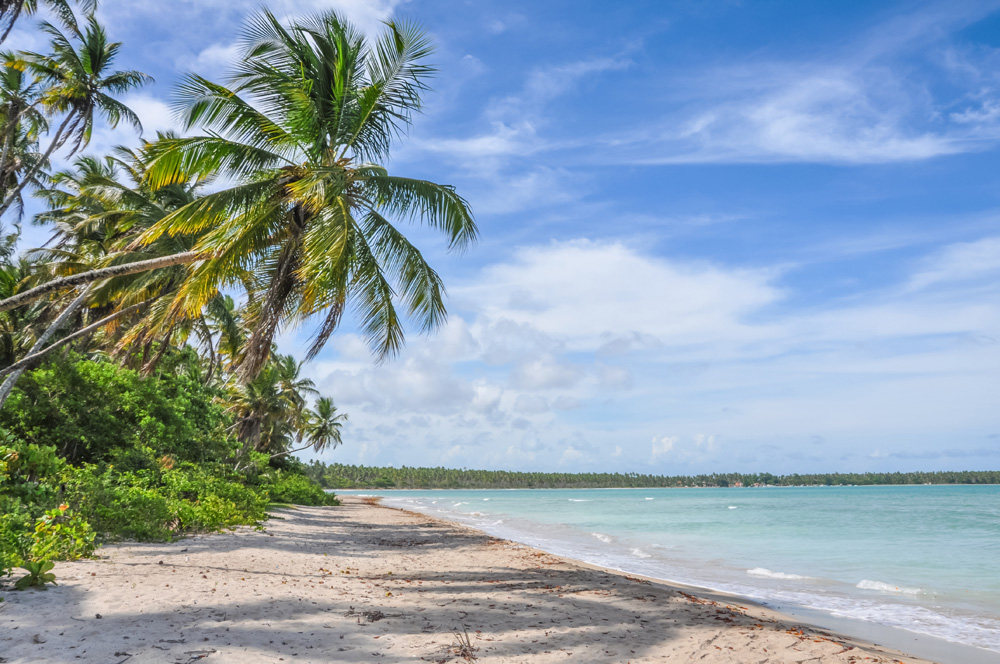
A stunning beach in Morro de Sao Paulo
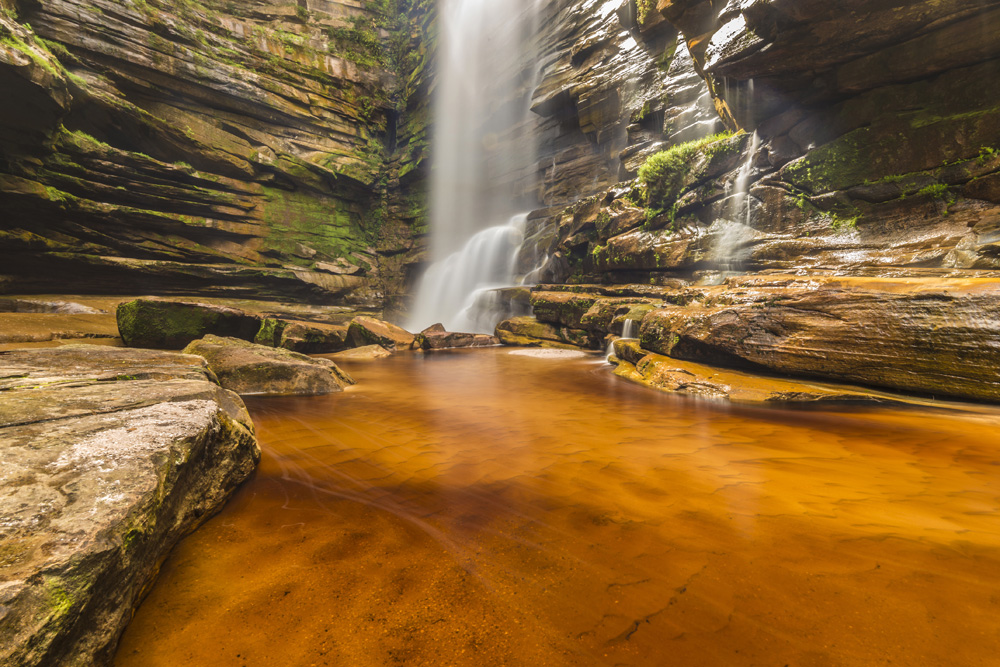
A waterfall in Chapada Diamantina National Park
Thanks to all its different beautiful geographical entities, Bahia is the perfect place to unwind and relax. As well as having fun in the sun, you can discover your inner self as you walk through the lush forests or fall back in time through the various colonial towns and cities of the area. All in all, it is surely well worth a visit, somewhere you have the opportunity to pursue myriad experiences in a vibrant South American atmosphere.

An aerial view of a Bahian beach
Salvador, A Rhythmic Reminder Of Brazil’s African Roots
Salvador, the capital, is located at Baia de Todos os Santos (Bay of Saints), a pulsating city of colours and African drum beats, a mix of the old and new as it is considered to be one of the oldest colonial cities in all of South America. It was a hub for the newly immigrated European and Arab cultures and preto (Afro-Brazilian) all overlooking a bay dotted with no less than 50 picturesque islands fit for day visits.
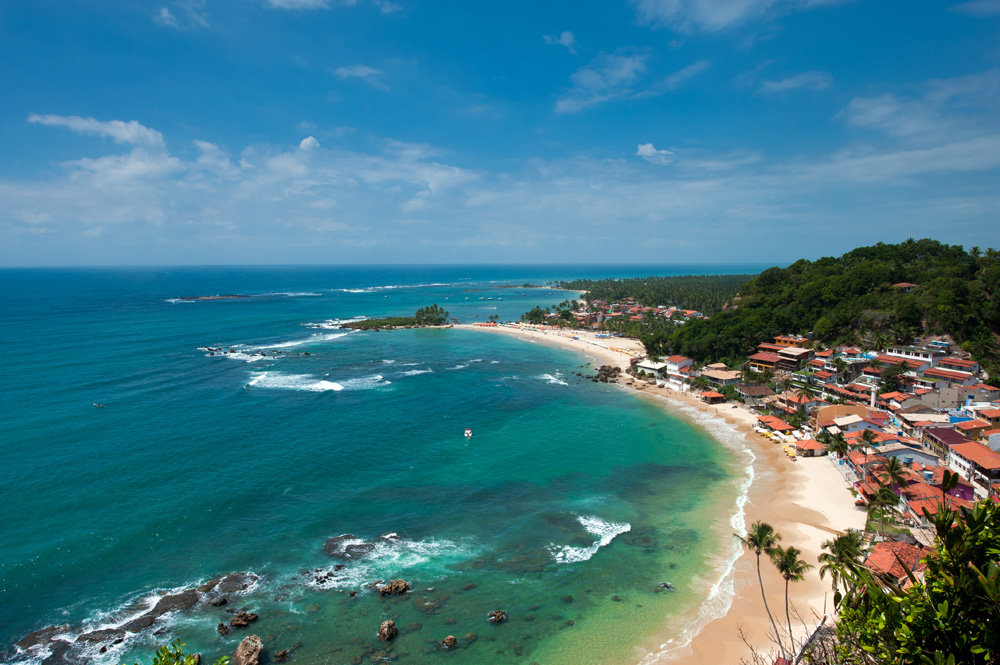
Beach residences in Morro de Sao Paulo
Once considered to be Portugal’s New World colony, Salvador is a city known to hold on to its roots, specifically its African ones. Festivals and drum corps pounding through the early hours of the evening and religious marches are common sites in the city’s streets. Capoeira, a Brazilian martial art, combines elements of dance, acrobatics and music with quick and complex moves. These are bursting with power and speed and spins and techniques in tune with the drum beats are often seen in the main plazas and open areas of the city.
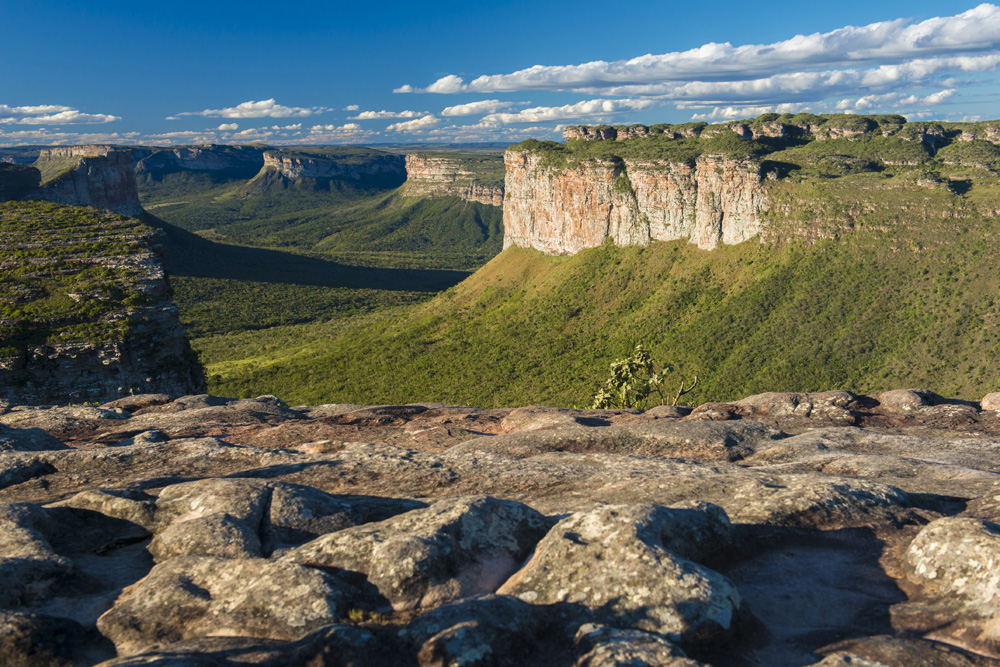
The Chapada Diamantina National Park
Being the fifth largest state in Brazil, Bahia provides many activities for tourists to enjoy. Since Salvador is a peninsula overlooking the bay, tourists looking for some relaxing times under the sun can charter a boat and hop off the coastal waters to enjoy secluded beaches away from the busy and crowded city shores. The bay provides ideal swimming waters as well as snorkelling in the reefs.

Brazilian woman of African descent, smiling, dressed in traditional Baiana attire
For a taste of history, you can head down to the Pelourinho district and take a stroll on the cobblestone streets lined with pastel coloured 17th-18th century colonial buildings and churches. One of the best areas to also explore the city’s historical past is Forte de San Antônio de Barra, the oldest fort in all of South America. It holds a nautical museum, Museu Náutico da Bahia, filled with relics and displays of Portuguese naval history. The museum caters to English speaking tourists, which is a rarity in Brazil.
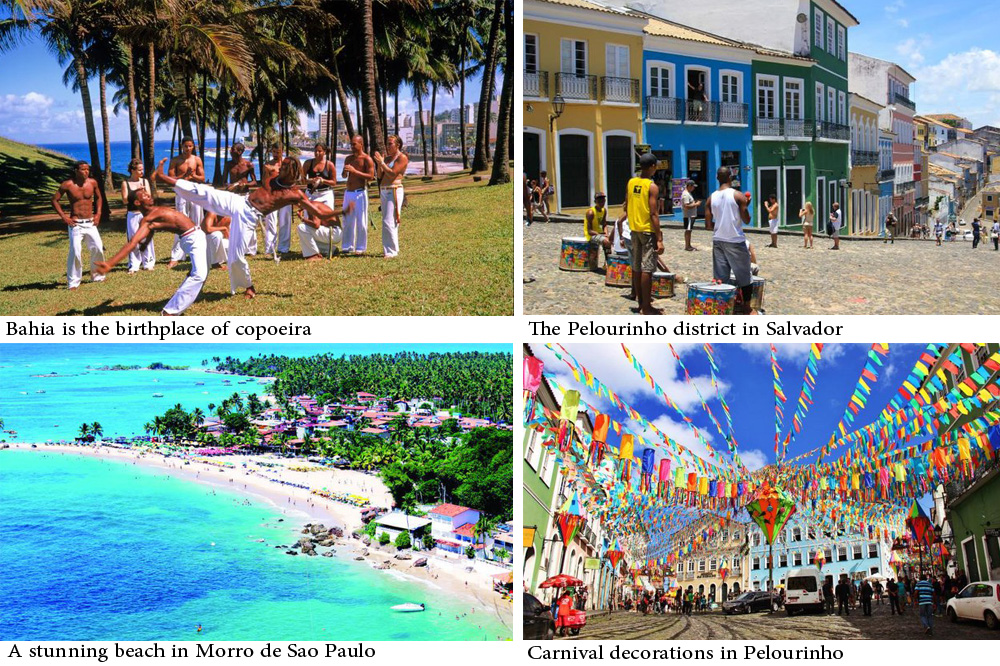
The Coconut Coast
Quite rightly, Bahia is where Brazilians head to for vacations. The coastline is dotted with scenic villages strewn with colourful buildings. As well as sitting on pristine golden to white sands overlooking the rich blue hues of the ocean, the building are engulfed in the lush greenery of the forests.
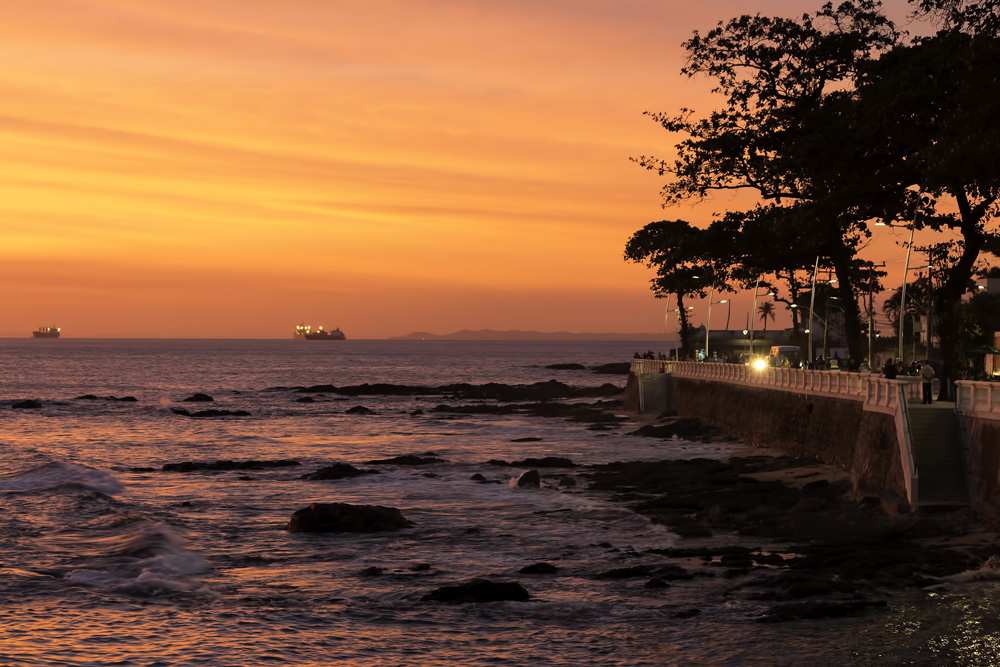
Sunset in Barra, Salvador
Trancoso is a beautiful coastal city with candy coloured clay houses and designer boutique hotels. You will find natural water pools formed by the reefs, which are surrounded by hundreds of palm trees and white velvety sand. Plus there’s the UNESCO protected Quadrado square. Trancoso, a former fishing village, has turned into a trendy gateway for Brazilians and international jet setters. That’s probably because the vibrant village has the kind of unspoiled, secluded beaches that are perfect for a quick and crowd-free getaway.

Colourful houses in Quadrado, the main square in Trancoso
For an island trip, it doesn’t get better than Morro de São Paulo, Tinhare. What makes this island is that cars are not allowed whatsoever. Seeing your luggage transported to your hotel or B&B by wheelbarrows sets a different pace to the start of the island stay, perfect for unwinding and breaking away from all the hustle and bustle. Morro de São Paulo has a Mediterranean feel to it, with calm waters and a romantic candlelit nightlife scene setting a relaxed pace in tune with the crystal clear waters of the Atlantic. Some of the activities on this island include lounging on the beach as the coconut trees sway with the cool breeze, snorkelling, canoeing, paragliding and water skiing.
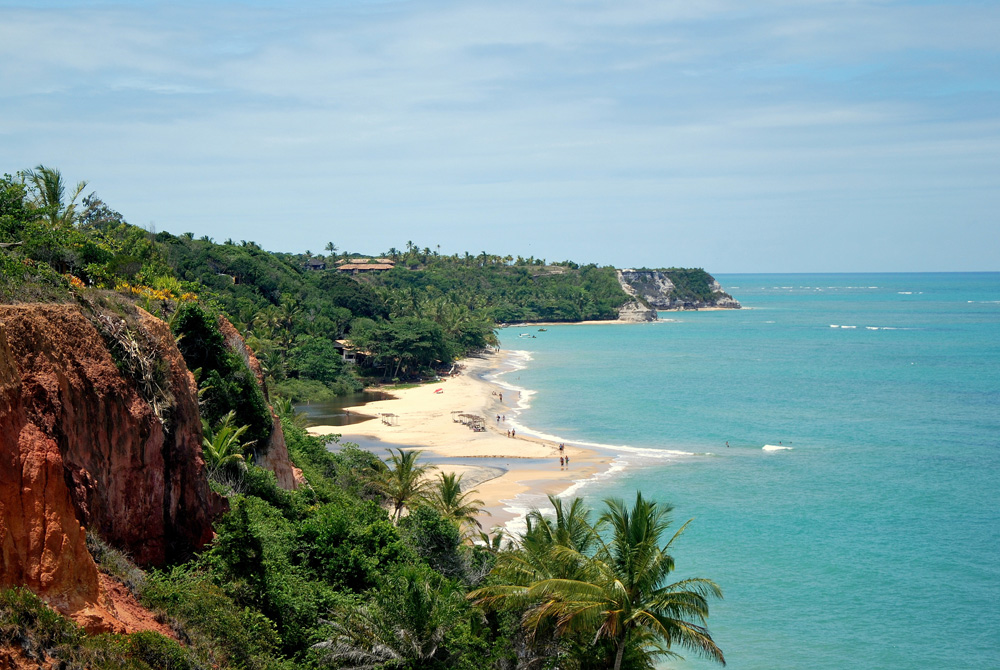
Espelhio beach in Bahia
Chapada Diamantina National Park
Take a break from the addictive lounging on the beach and head to Bahia’s Chapada Diamantina National Park. The park is known for its dramatic plateaus and Lapa Doce caves formed by the rivers of the region. Of course, there’s also Pratinha Lake, gushing waterfalls such as Poco do Diablo and a beautiful scenic climb up the top of Pai Inacio. The park is well equipped to accommodate passing visitors or those who stay a few days eager to enjoy the forest’s flora and fauna. For a great experience in the forest grounds, it’s best to hire an English-speaking tour guide. In fact, most of the tour guides are good English speakers and are fully versed about the surrounding grounds. You can reach the park by a night bus or a plane from Salvador.
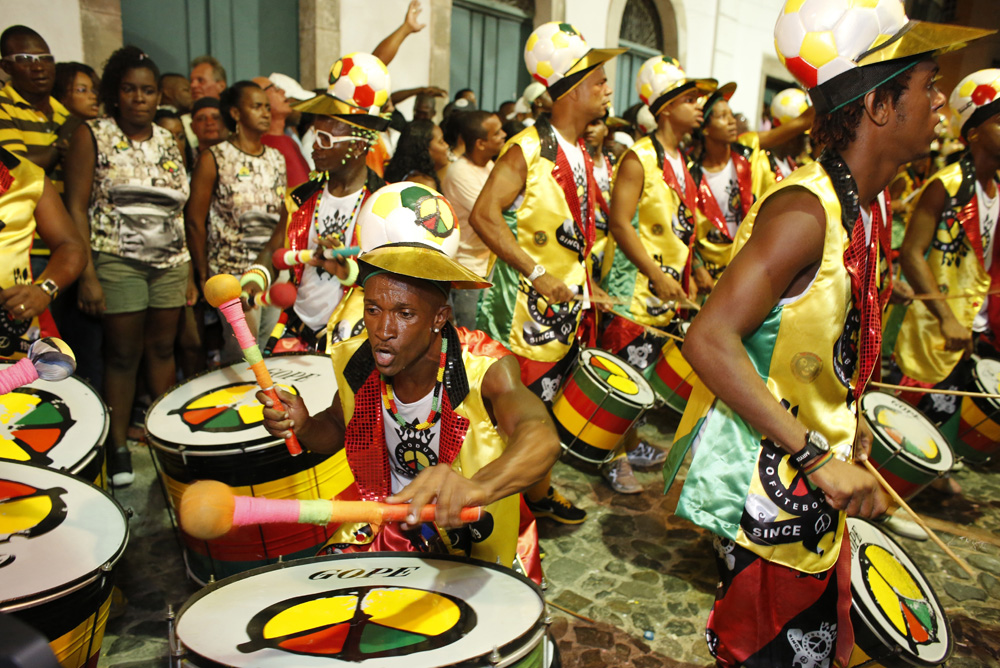
Music is part of life in Bahia
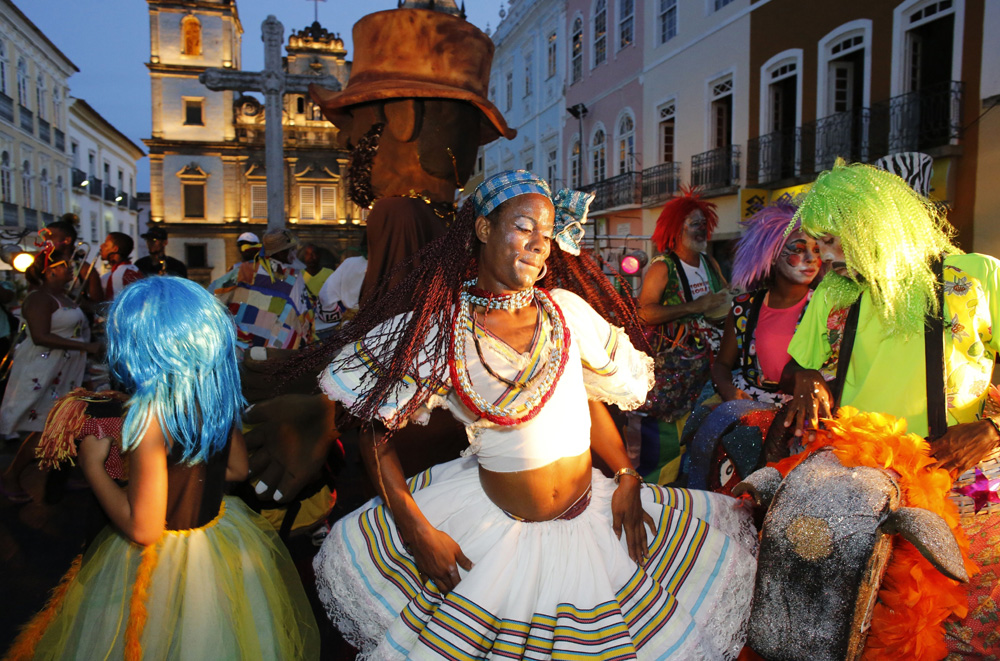
Street carnival in Pelaurinho
A Distinct Regional Cuisine
Bahian cuisine is known for its use of a specific chili pepper, known as malagueta chilli. Dendê oil, which is extracted from an African palm that grows in Bahia, is another top ingredient. The African influence in the food is unmistakable and the results are a spicy and flavourful cuisine. One of Bahia’s most famous dishes is vatapá, a spicy shrimp purée made with palm oil and nuts. There’s also moqueca, the region’s most popular dish, which is a stew made out of a mixture of shrimp or seafood, coconut, garlic, onion, parsley, pepper, tomato paste and dendê oil, served with a side of rice cooked with coconut milk, presented in a clay pot. Acaraje is a dish made with beans and fried dendê oil served with pepper sauce, dried shrimps, tomato and green pepper. Another favourite, Caruru is made with okra, fish, shrimp, peanuts and cashew nuts seasoned with oil and peppers. Many restaurants serve their dishes with a hot malagueta sauce, so it’s best for visitors to inform the waiters to keep the sauce on the side if they aren’t acquainted with its strong taste.
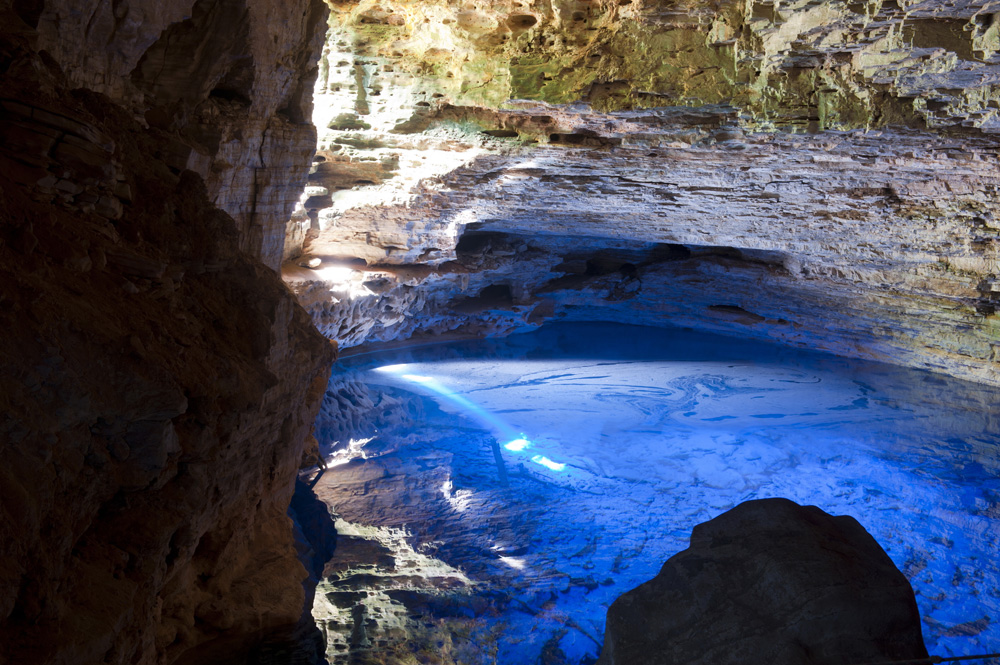
The Poço Azul cave in Chapada Diamantina
4 Travel Tips
* The weather in Bahia is quite pleasant all year around, characterised by a tropical climate with temperatures usually between 28-33 °C all year around. The best time to visit is between February and June, but all in all it’s great to head to Bahia anytime of the year.
* Don’t use credit cards in Bahia unless you are in shopping malls or hotels.
*It’s better if you leave your valuables at your hotel before heading to the beach.
*For health reasons, you should always carry mosquito repellent as mosquito-borne diseases are common in Brazil and specifically in Rio de Janeiro and Bahia.

















